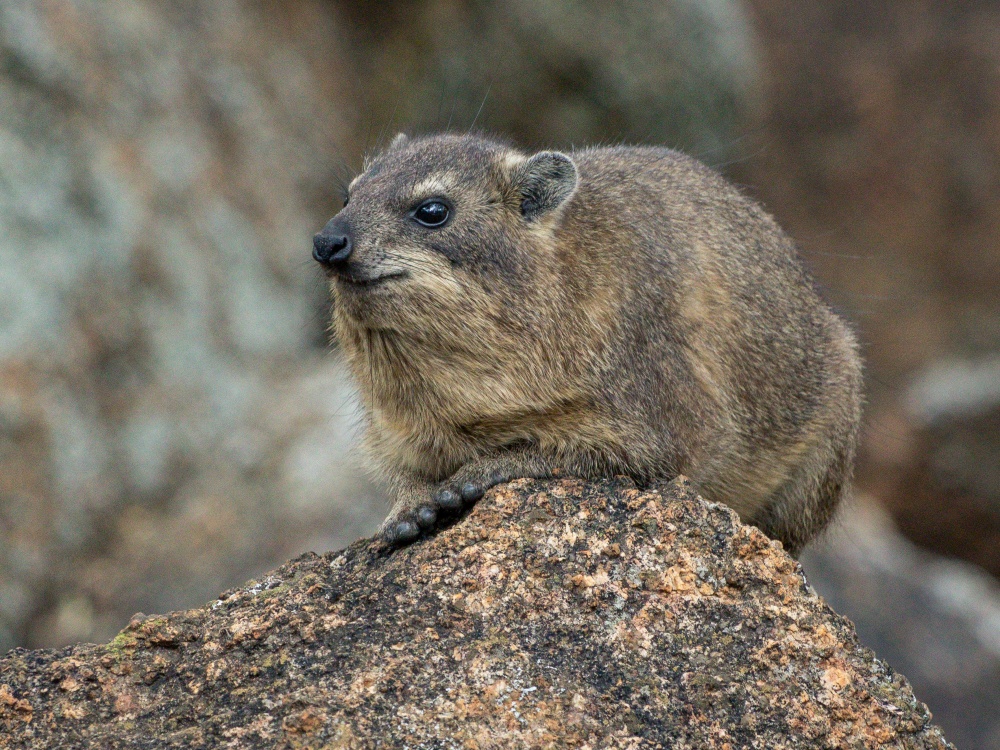At first glance, hyraxes might be mistaken for rodents, given their size, shape, and continuously growing incisors.
Their small, furry bodies and nimble movements contribute to this misconception.
However, the surprising truth is that hyraxes are more closely related to elephants and sea cows than to rodents.
This connection might seem odd, but it’s a fascinating example of how appearances can be deceiving in the animal kingdom.

Hyraxes can be found across the Middle East and Africa, with six or seven species currently extant.
These adaptable creatures thrive in a range of environments, from solitary tree dwellers to sociable groups living on rocky outcrops.
Their ability to live in such diverse habitats is a testament to their resilience and adaptability.
Whether basking in the sun on a rock or navigating the branches of a tree, hyraxes have carved out a niche for themselves in various ecosystems.

One of the most interesting aspects of hyraxes is their method of regulating body temperature.
Unlike many other animals, hyraxes have poor internal thermoregulation and rely on external sources to warm up.
They often bask in the sun to achieve this, soaking up heat to maintain their body temperature.
This behavior is not just a leisurely activity but a crucial survival strategy in their natural habitats.

Hyraxes possess specialized feet that act like suction cups, allowing them to climb and cling to various surfaces with ease.
This unique adaptation enables them to navigate their rocky or arboreal homes efficiently.
Whether they are scaling a steep rock face or climbing a tree, their feet provide the grip needed to move confidently and safely in their environment.

Their diet consists primarily of plants and bugs, and their tusk-like incisors play a significant role in their feeding habits.
These incisors are not just for eating; they are used in displays and grooming as well.
The hyrax’s teeth are multifunctional tools that serve various purposes essential for their survival and social interactions.

A unique feature of hyraxes is their multi-chambered digestive system, which ferments food with the help of microbes, much like the system in ruminants.
However, unlike cows, hyraxes do not regurgitate cud.
This digestive efficiency allows them to extract maximum nutrients from their plant-based diet.
Additionally, their highly efficient kidneys conserve water, resulting in very concentrated urine that dries into a molasses-like substance.

Some hyrax species use communal bathroom areas, creating large piles of fossilized urine over time.
These deposits can provide valuable environmental data, much like ice cores do in colder regions.
Researchers can study these urine piles to gain insights into historical climate changes and other environmental factors, making hyraxes an unexpected but important source of scientific data.

Belonging to the clade Paenungulata, hyraxes share this classification with elephants, manatees, and dugongs.
The exact evolutionary relationships within this group are still a subject of research, with multiple possible branching scenarios.
Interestingly, both hyraxes and elephants have high concentrations of myoglobin in their muscles, a trait that suggests an aquatic background.
This characteristic is typically found in animals that dive and hold their breath for extended periods.

Hyraxes exhibit a behavior known as “heaping,” where they pile together to conserve heat.
They also have relatively long gestation periods for their size, lasting six to eight months, a trait they might have inherited from their larger ancestors.
All these traits and behaviors highlight the unique and intriguing nature of hyraxes, creatures that defy simple classification and continue to fascinate researchers and animal enthusiasts alike.
Watch the full video below.
Please SHARE this with your friends and family.















